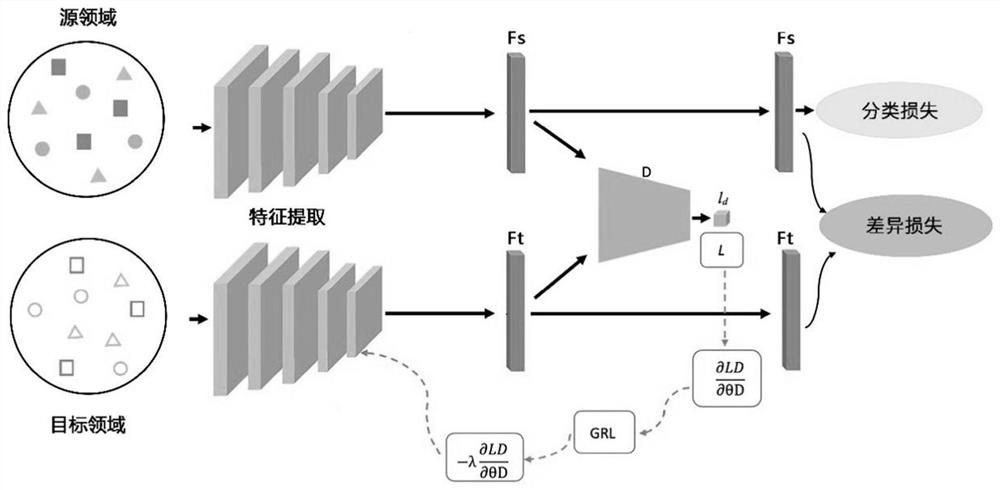Unsupervised cross-domain voiceprint recognition method fusing distribution alignment and adversarial learning
A voiceprint recognition, unsupervised technology, applied in neural learning methods, speech analysis, biological neural network models, etc., can solve problems such as gradient degradation, and achieve the effect of improving accuracy
- Summary
- Abstract
- Description
- Claims
- Application Information
AI Technical Summary
Problems solved by technology
Method used
Image
Examples
Embodiment Construction
[0020] The embodiment of the present invention provides an unsupervised domain-adaptive voiceprint recognition method that integrates distribution alignment and adversarial learning. The unsupervised scenario here refers to the training data, where the source domain data has speaker annotations and the target domain data does not. Speaker annotation. The specific implementation method is to add two substructures in the network. One is to introduce a domain classifier at the end of the forward calculation. The core idea is to learn domain-independent classification discriminative features through this structure. The second is to use the last fully connected layer of the feature extraction network as a relevant alignment module to minimize the difference between the source domain data and the target domain data, so that the model can be classified as accurately as possible in the unlabeled target domain.
[0021] figure 1 It is a schematic diagram of an unsupervised cross-doma...
PUM
 Login to View More
Login to View More Abstract
Description
Claims
Application Information
 Login to View More
Login to View More - R&D
- Intellectual Property
- Life Sciences
- Materials
- Tech Scout
- Unparalleled Data Quality
- Higher Quality Content
- 60% Fewer Hallucinations
Browse by: Latest US Patents, China's latest patents, Technical Efficacy Thesaurus, Application Domain, Technology Topic, Popular Technical Reports.
© 2025 PatSnap. All rights reserved.Legal|Privacy policy|Modern Slavery Act Transparency Statement|Sitemap|About US| Contact US: help@patsnap.com



